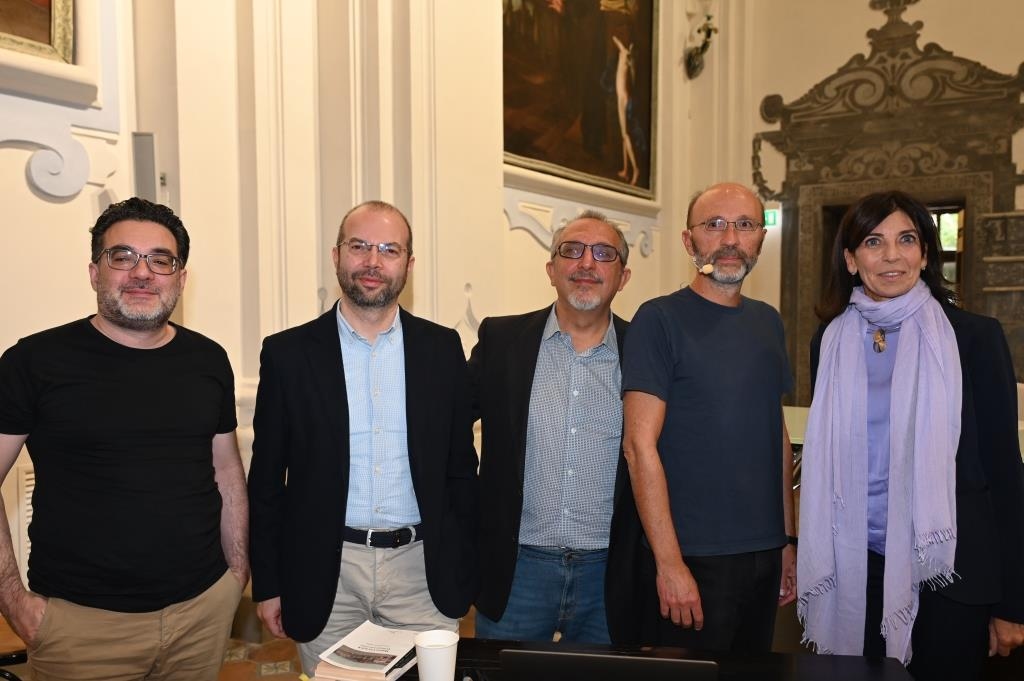Milan, Lorenzo Lotto's Nativity lights up Christmas at the Diocesan Museum.

Milan, 27 October 2025 – Christmas at the Carlo Maria Martini Diocesan Museum in Milan will be illuminated by the Nativity (1525) by Lorenzo Lotto (1480-1556), arriving from the Pinacoteca Nazionale in Siena.
The work, created by the artist dubbed "the restless genius" of the Renaissance for his extraordinary originality, will be the focus of the exhibition, which, for the seventeenth edition of the initiative, is curated by Axel Hémery, director of the National Museums of Siena, and Nadia Righi, director of the Diocesan Museum. It will be on display from October 28, 2025, to February 1, 2026.
"This year we are pleased to present Lorenzo Lotto's splendid panel from the Pinacoteca Nazionale di Siena as a Masterpiece for Milan," says Nadia Righi, director of the Diocesan Museum and co-curator of the exhibition. "Through a slow process of exploration that each year encourages us to approach the work from both a historical and artistic perspective and a spiritual perspective, visitors will be able to admire a painting characterized by an intimate and domestic atmosphere, in which the theme of the birth of Jesus is told through the episode of the first bathing of the Baby Jesus, narrated in the apocryphal gospels." "Lorenzo Lotto," continues Righi, "an extraordinary experimenter with light and color, sets the scene in a nocturnal setting and offers us a delicate interweaving of gestures and an extraordinary intensity in the gazes of the protagonists. His anxieties still speak to us, after five centuries, and invite us to grasp the deepest meaning of Christmas, the irruption of the extraordinary within the ordinary."

“The National Museums of Siena,” declared Axel Hémery, director of the National Museums of Siena and co-curator of the exhibition, “are delighted to illuminate Milanese Christmas with a jewel of infinite facets: a unique iconography, a spiritual depth, and a charm that will last beyond the exhibition.”
The painting approaches the theme of the Nativity with an unusual iconography: in addition to the Holy Family, an elderly midwife is depicted in the foreground, a figure not present in the canonical Gospels but introduced by the apocryphal Gospels. The intimate and intimate scene takes place inside a simple stable, in a nocturnal setting, which the artist borrows from the Nordic models circulating in Venice and, more generally, in northern Italy at the time.
A master in experimenting with the potential of light, Lotto uses a double light source: the first is the halo generated by the Child, which spreads across the faces and clothes of the other characters, and is then reflected on the objects scattered around them; the second is the flame of the fireplace in the background, where another female figure appears in a room behind.
The work demonstrates Lotto's skill in creating an intimate, domestic setting, where Joseph's work tools and household objects blend with the affectionate, spontaneous gestures of the characters, which also spark a subtle interplay of glances. The elderly midwife gazes with emotion at the Virgin, who in turn focuses with poignant tenderness on the Child, who, with a remarkably natural gesture, seems to withdraw from the cold water, while behind them, Joseph, with outstretched arms, watches the scene from afar.
The identification of the elderly midwife is far from certain. According to some apocryphal Infancy Gospels, she is believed to be the unbelieving Salome, punished with paralysis of her limb because of her distrust of Mary's virginity and later healed by the intervention of an angel who invited her to touch the newborn. Another text, the Arabic Infancy Gospel, which also circulated in Europe, suggests Anastasia, an elderly woman with paralyzed hands, who rushes to help Mary. Amazed by the exceptional nature of the event, she receives the grace of healing. It is perhaps more correct to leave both hypotheses open, imagining that Lotto deliberately superimposed the two figures, focusing on the gazes of the elderly woman as she observes the face of Mary, who in turn is intent on gazing at the Child.
From an iconographic point of view, further unusual details can be noted, such as the astonished gesture of Saint Joseph and the presence of the umbilical cord in the Child, which has not yet been cut, to underline the humanity of Christ.
Regarding its provenance, it is believed that the panel originally belonged to the Gonzaga collection in Mantua, which was plundered in 1630 during the Thirty Years' War. At that time, some works, stolen by Captain Piccolomini, are said to have reached Siena. Following the marriage of the last Piccolomini heir to Giuseppe Spannocchi, the painting passed to the groom's family, who donated it to the Sienese collections in the 19th century.
During a recent restoration (2018), the date and the painter's signature emerged at the bottom right of the work. These had been cited in documents but were now considered lost, hidden by dirt and previous pictorial restorations. Critics now agree that the date is 1525, not 1521, as previously erroneously believed. The work would therefore have been executed at the end of the painter's long stay in Bergamo (1513–1526), one of the most peaceful and fruitful periods of his artistic career, during which he developed an absolutely original style.
The work will be presented in an exhibition that offers both a historical-artistic and spiritual insight, supported by educational materials, images, videos, and music, encouraging reflection on the painting and its meaning. Guided tours are also planned every Sunday, along with workshops for children and a series of in-depth conferences in January.
Il Giorno





